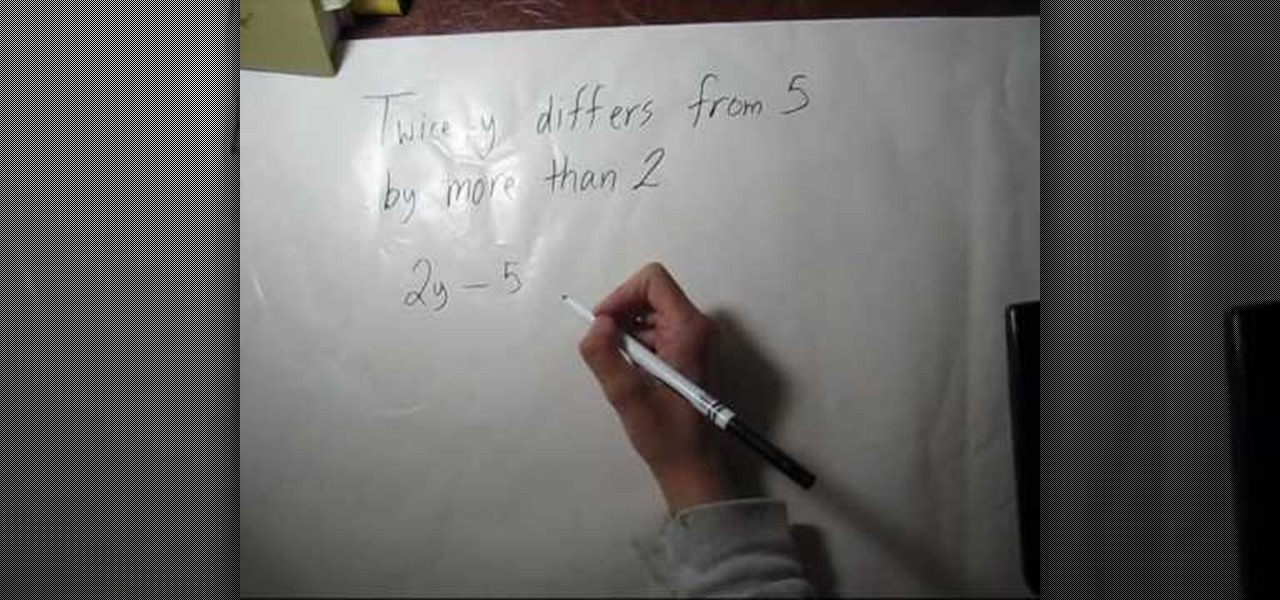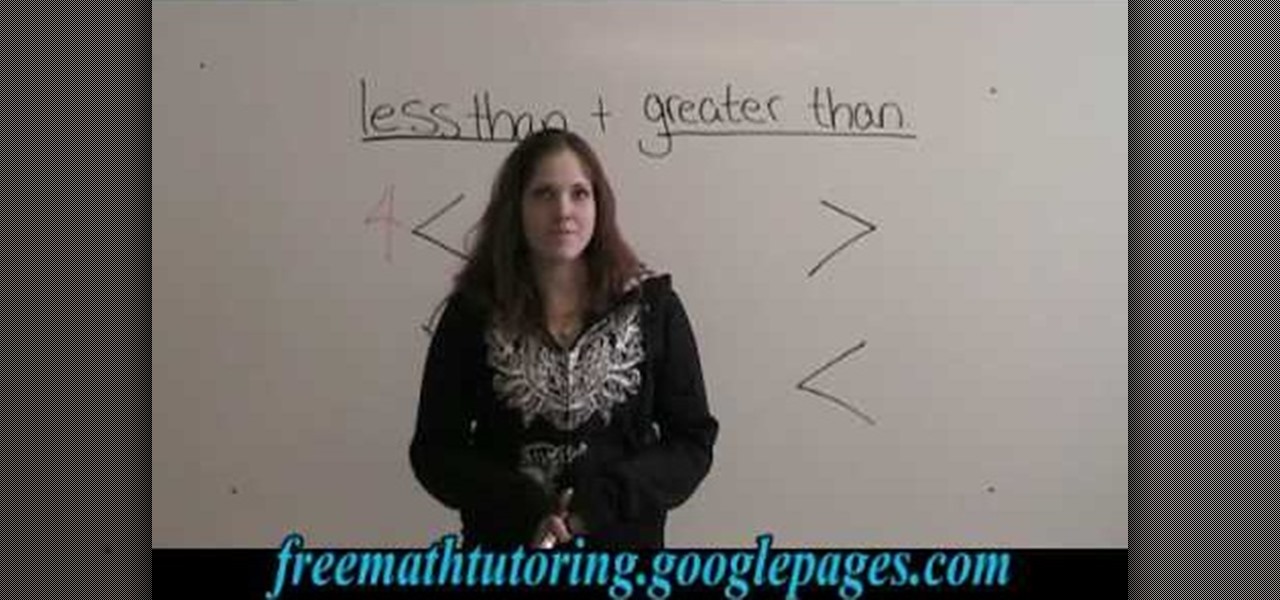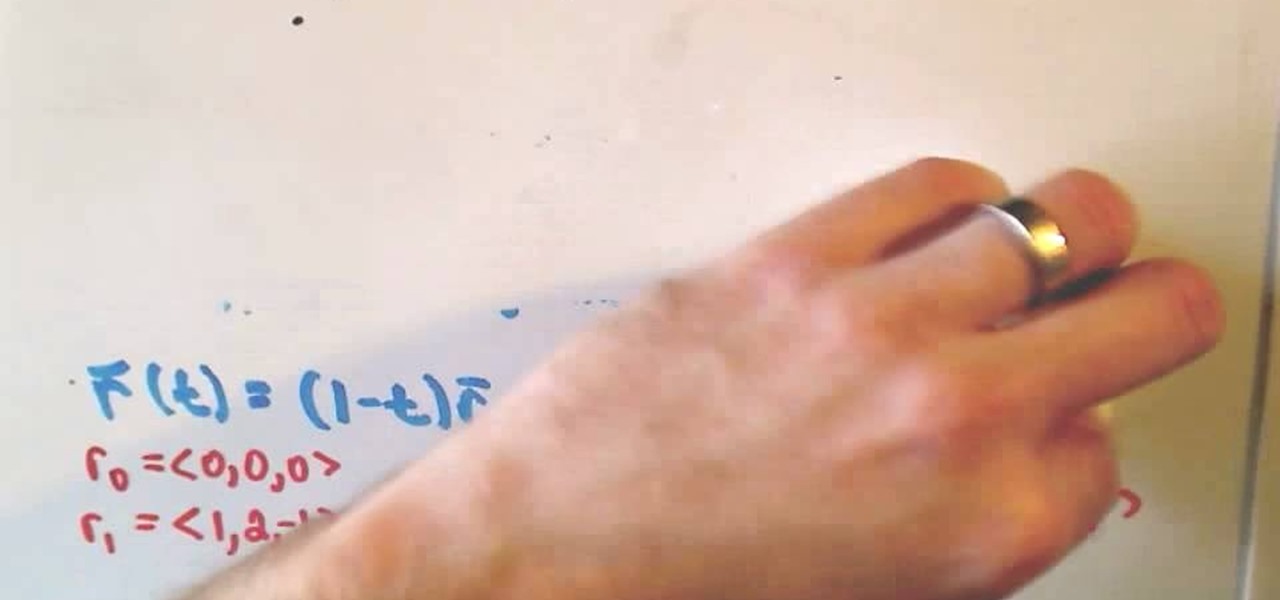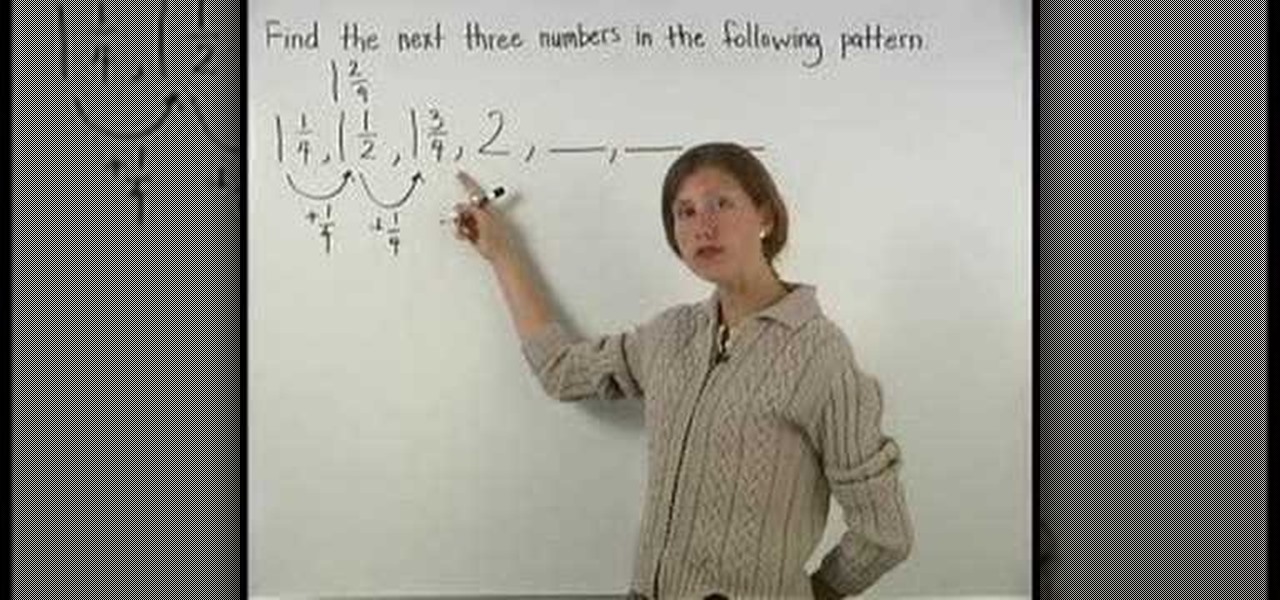Math How-Tos

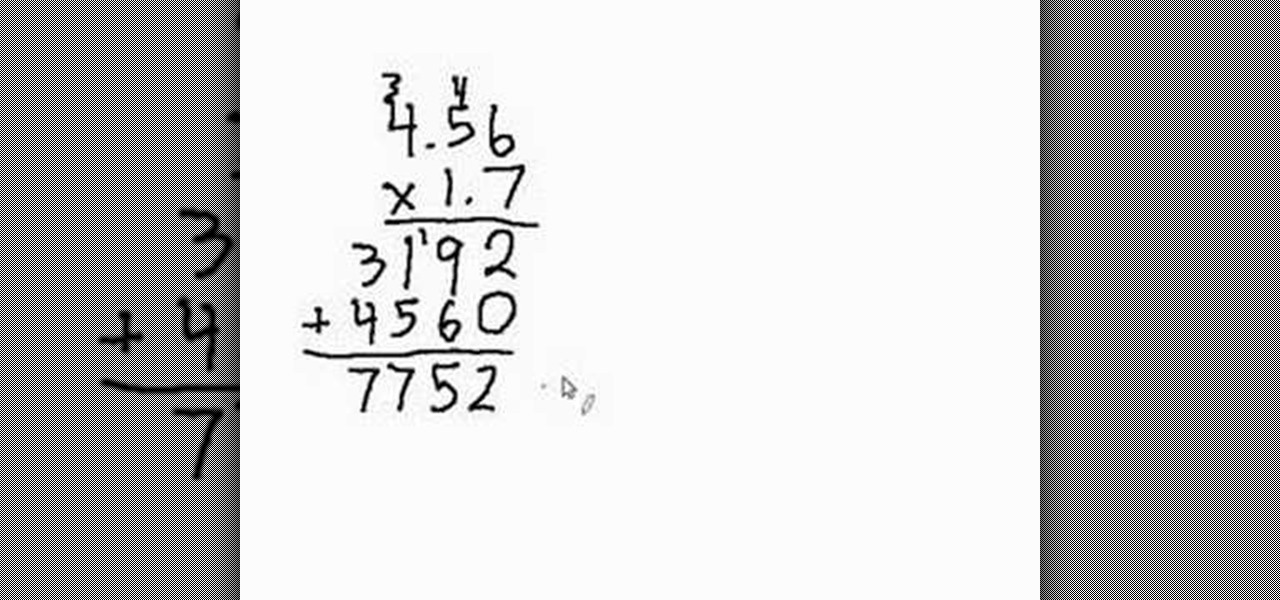
How To: Multiply decimal numbers
Multiplying decimals is made easy in this math tutorial. The narrator illustrates the process for multiplying decimal numbers in a very simple to understand fashion. You start by simply ignoring the decimals and multiplying the numbers as you normally would. The video shows you the rest of the steps to arrive at a number with the decimal in the right place.
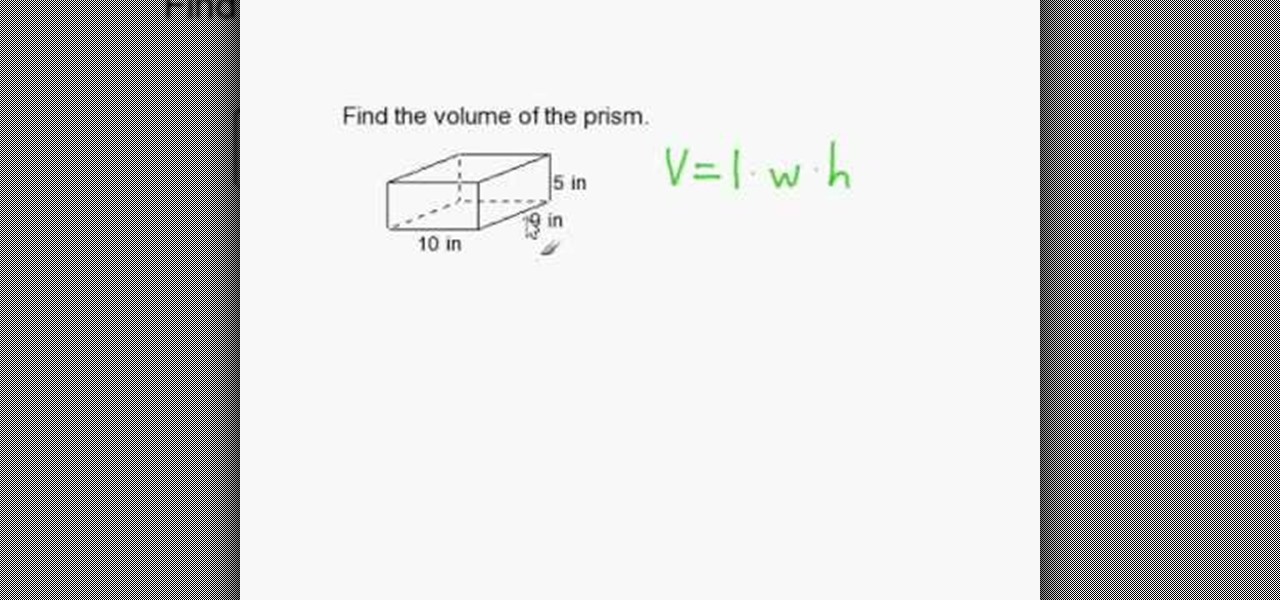
How To: Find the volume of a rectangular prism
Another thing you will learn in geometry is volume. In this tutorial, learn how to find the correct volume of a rectangular prism. A rectangular prism is a three dimensional object, which is why you are searching for volume as opposed to area. Check out this video and see just how easy it is to calculate rectangular volume.

How To: Calculate your GPA with repeated courses
This is an educational video usually for college students or maybe even some high school students. This video explains to us how to calculate our cumulative grade point average. The main character in this video is Colleen who is a Registration Assistant. This video is mainly concerned with the students at the specific university that Colleen attends, however, all students who are graded can use this to help calculate their GPA. Although Colleen goes into a rather lengthy explanation of GPA, t...
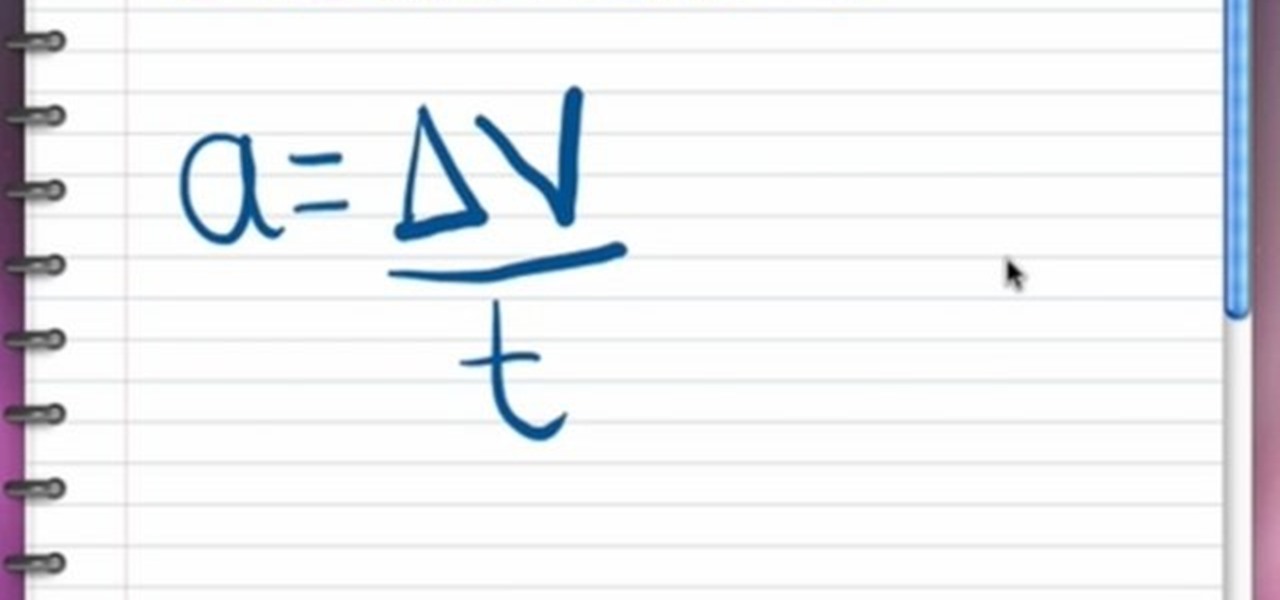
How To: Understand velocity, acceleration, and free fall
In this video the author explains the various concepts like speed, velocity, free fall speed etc., Speed tells you how fast you are going, i.e. it is distance divided by time taken to travel it. Velocity is nothing but speed along with direction. Now she tells that acceleration is used to measure the rate of change in velocity. So she says that acceleration is difference in velocity divided by the time. She also explains that there can be acceleration with out change is speed as there can be ...
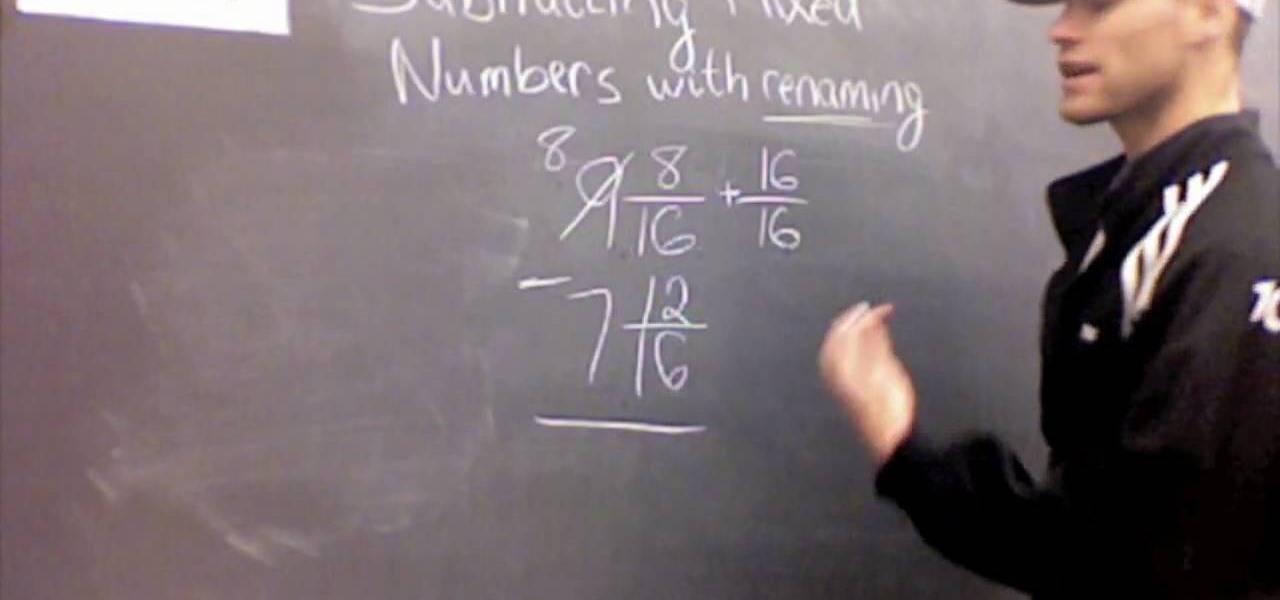
How To: Subtract mixed numbers with renaming with Mr Binkley
This video is about subtracting mixed numbers and renaming. 1. Start on the right side of the problem.
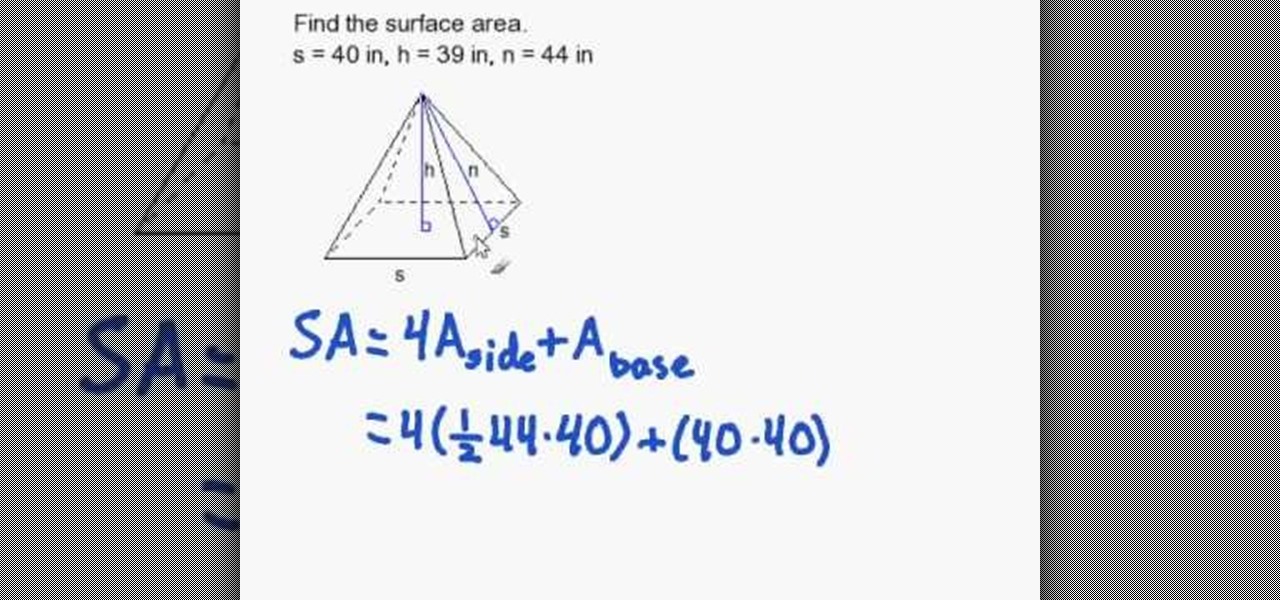
How To: Find the surface area of a regular pyramid
In this tutorial, the instructor shows how to compute the surface area of a regular pyramid. A regular pyramid has four equal sides which are in triangle form, and the base in square form. Its surface area is four times the area of its side plus the area of its base. He goes on and takes an example with sample values and demonstrates how to compute the final value using the formula. He reminds the viewer to use square units in the final answer, as square units equal the area. To find out the ...
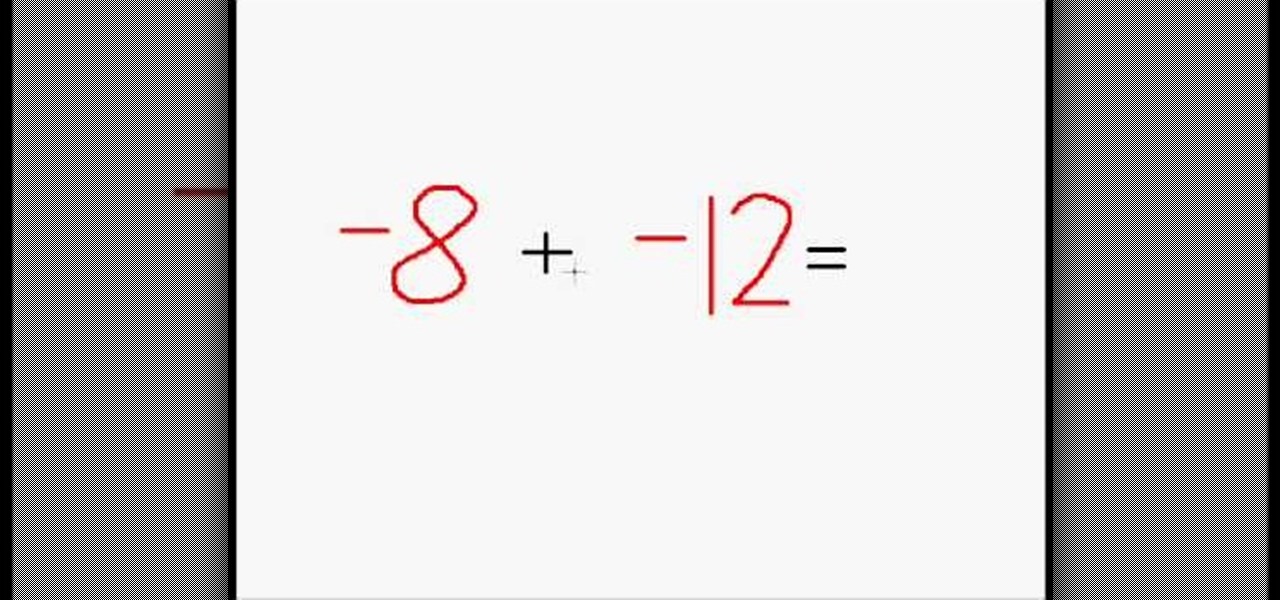
How To: Subtract positive & negative numbers
In this Math Made Easy tutorial the author shows how to subtract positive and negative numbers. He says that because of the numerous combination of positive and negative numbers it adds to a lot of confusion. Now he shows a trick of how to add positive numbers to negative numbers showing that it's equivalent to subtracting the negative number from the positive number. He shows that if you want to subtract a negative number from a positive number we should actually cancel all the signs and the...
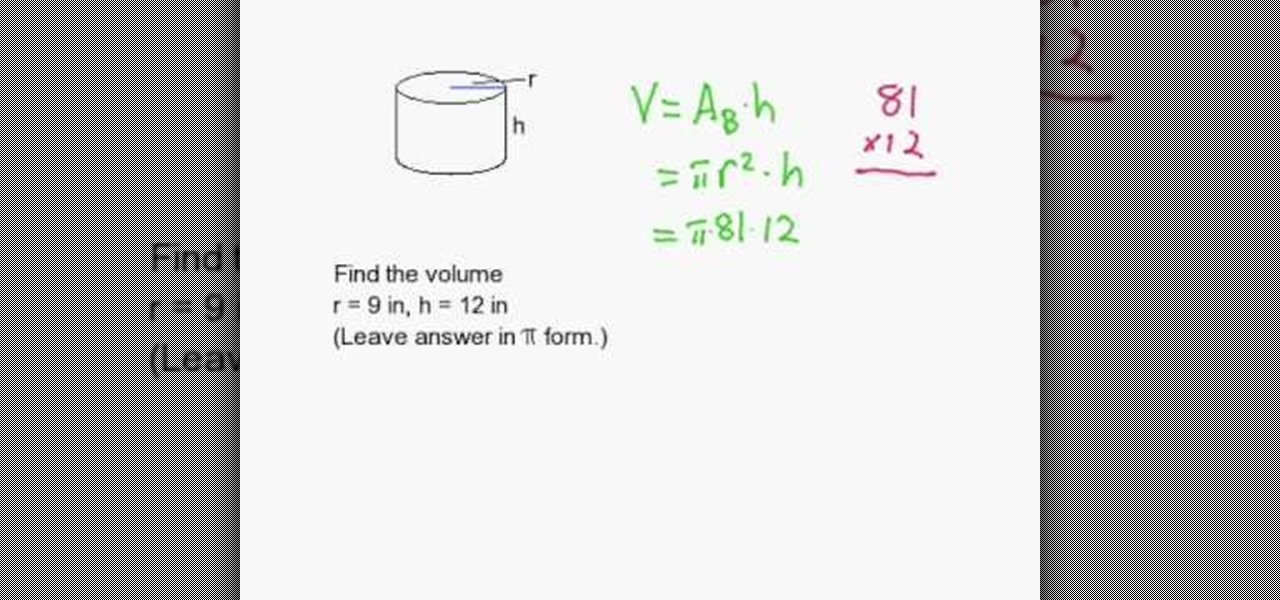
How To: Find the volume of a cylinder
This is an excellent educational video on mathematics. This video teaches you how to find the volume of cylinder with an example. The volume of cylinder is the bottom area multiplied by the height. Here, the height is 12 inches and the radius is 9 inches. The bottom area is Pi r square=piix81 sq inches. volume = piix81x12 = piix972
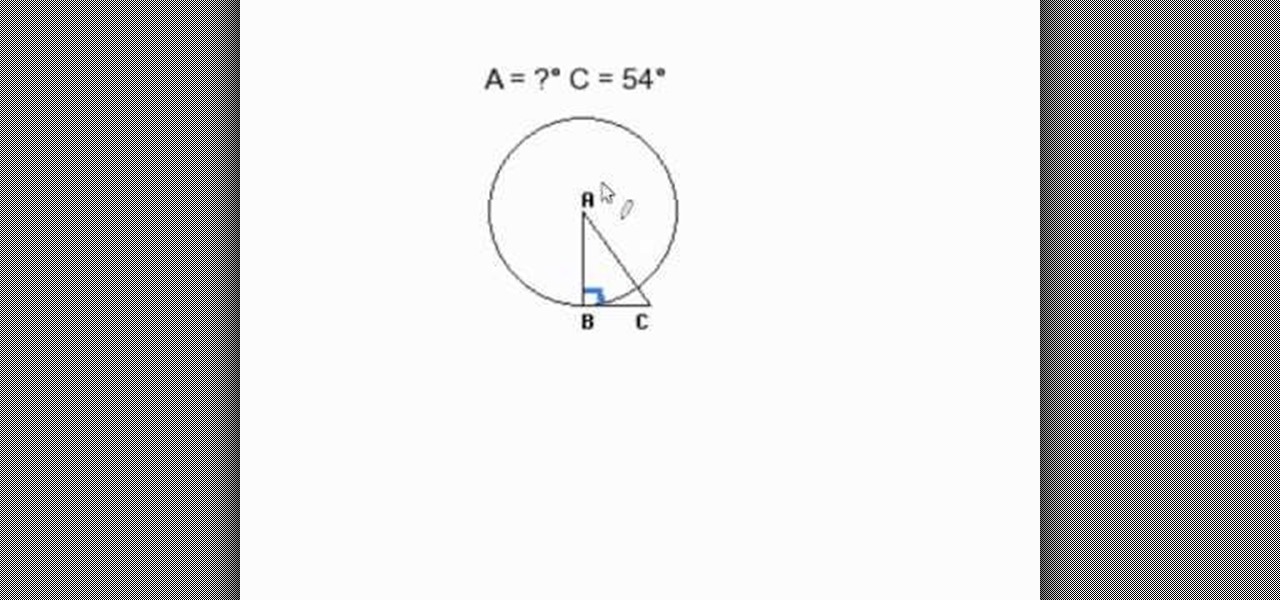
How To: Find a central angle with a radius and a tangent
mathproblemgenerator.com provides a video about how to find a central angle with a given radius and a tangent. The angle at the intersection of the radius and the tangent is equal to 90 degrees. The second angle is also given in the problem. So the central angle is equal to 180 minus (90 plus the other angle given). In the video, the given angle is 54 degrees, making the equation = 180 - (90 + 54). Therefore the central angle is equal to 36.
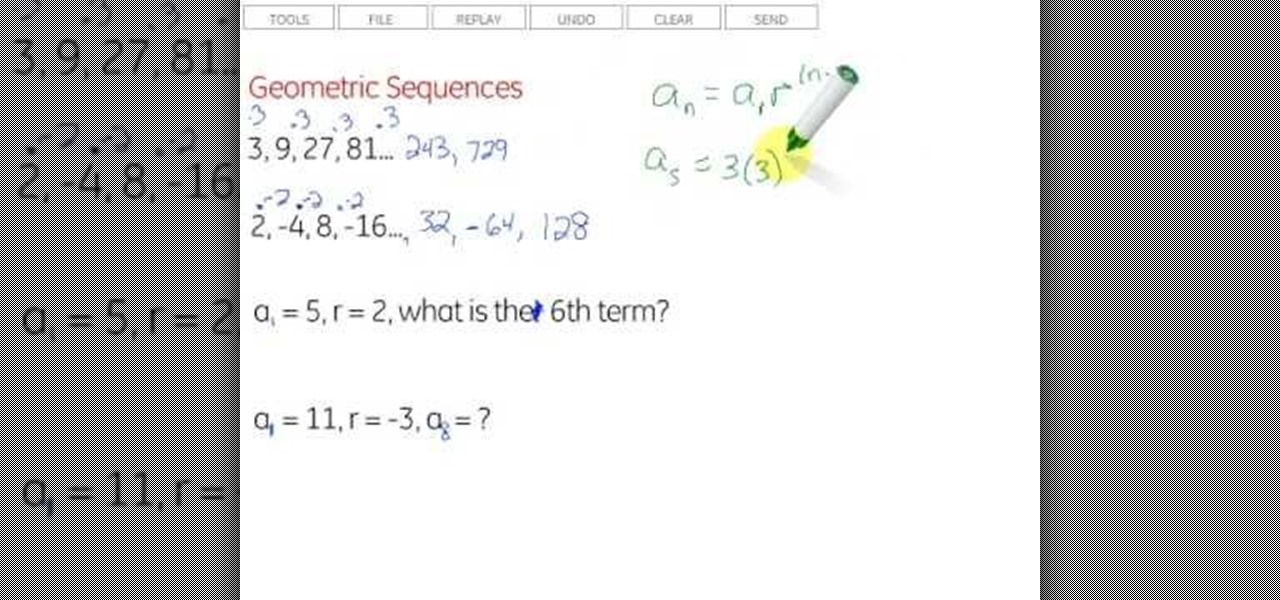
How To: Identify geometric sequences and find the nth term
Have a hard time figuring out what a geometric sequence is? This video will help you to identify different geometric sequences as well as determining its nth term. A geometric sequence is a group of numbers that follow a certain pattern of multiplying a fixed number from one term to another. The tutorial uses 4 different examples of geometric sequences and also shows you how to solve each of these sequences as well. Take some time to watch this video if you are a pre-algebra student, it is a ...

How To: Draw a perpendicular line from a point on a line
For people who are learning how to do basic geometry, this video will show you how to draw a perpendicular line from a point on a line using only a compass and pencil. You should first take your compass and place it on the center of the point on the line, drawing an even semicircle around the point. Then, finding the points where the semicircle intersects your original line, place the center of your compass on this point and then draw some arcs over where your point is. Repeat this on both si...

How To: Find the volume of a sphere easily
Ever wonder how much delicious chocolate pudding you could fit inside a sphere as large as the earth? Maybe not, but after watching this video, you could figure it out! Follow along with the narrator as the formula for determining the volume of sphere is explained, accompanied by helpful visual animations that make the calculations come to life. And if you can't hear the instructions, you may need to check your volume.

How To: Solve single-step equation by taking the reciprocal
In this video tutorial the instructor shows how to solve a single-step equation by taking the reciprocal. He says that in the equations of fractions containing a variable on the one side, you multiply the reciprocal of its numerical constant to it so that only the variable x stays out. Similarly we need to multiply the reciprocal value that we used on the left hand side on the right hand side too to maintain the equality. Now after simplification as only x is left on the one side we get its v...

How To: Understand Newton's second law
In this tutorial the author explains the concept of Newton's Second Law of motion which states that force is equal to mass times acceleration. So the equation to compute force F is F = m * a, where m is the mass of the body and a is the acceleration produced by the force on that body. He explains that even our weight is our mass times the gravity. So now he explains that mass of a body is constant and only our weight changes depending up on the situation we are in. If you want a clear underst...
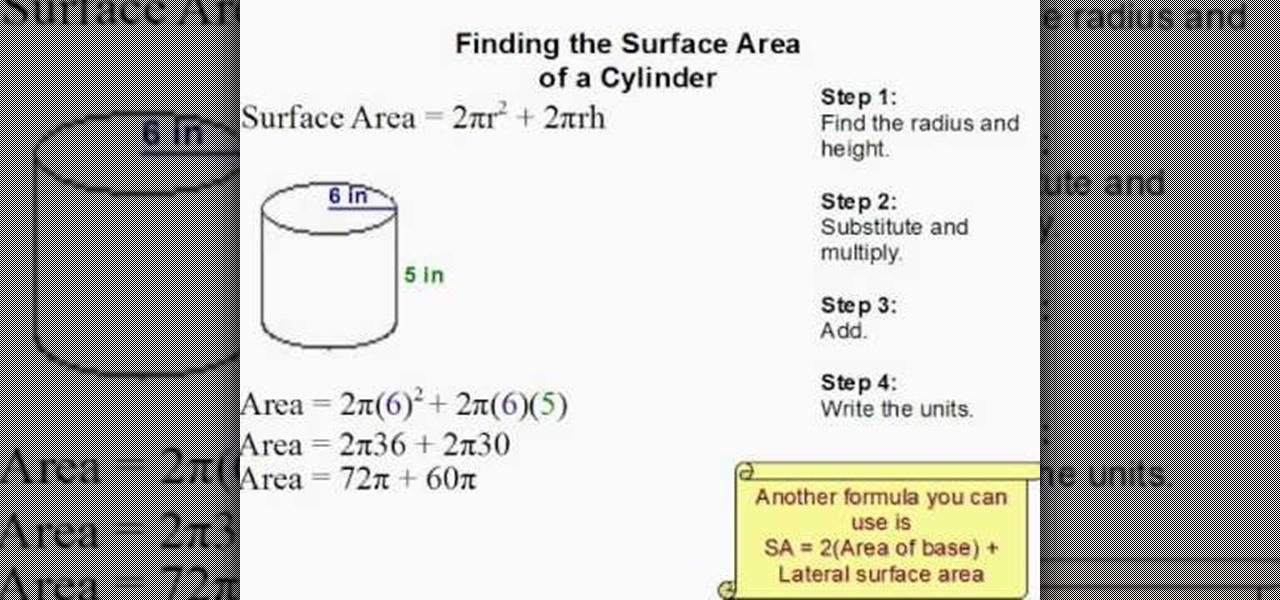
How To: Find the surface area of a cylinder easily
In this video tutorial the author shows how to find the surface area of a cylinder. He shows a four step approach to solve this problem. First he gives us a formula to find the surface area of a cylinder, where Surface area A = 2 * Pi * R * R + 2 * Pi * R * H, where R is the radius of the base of the cylinder and H is the height of the cylinder. Now he identifies those values and substitutes them in the formula giving the surface area of the cylinder. This video shows how to compute the surfa...
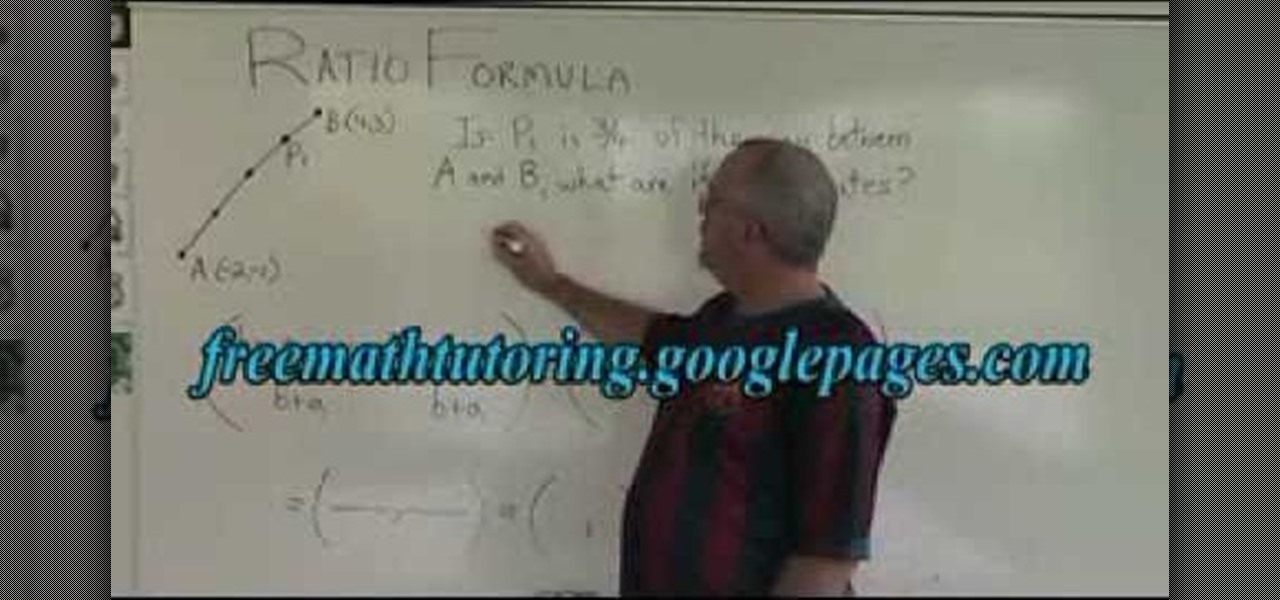
How To: Use the ratio formula to find coordinates of a point
This video is recorded in a mathematics class room. It is very clear by the sound and picture. The faculty here is explaining that the ratio between two numbers can be found using various formulae and methods. For example, 3:1 is the ratio between p and q. Likewise he explained the other formulae and methods.
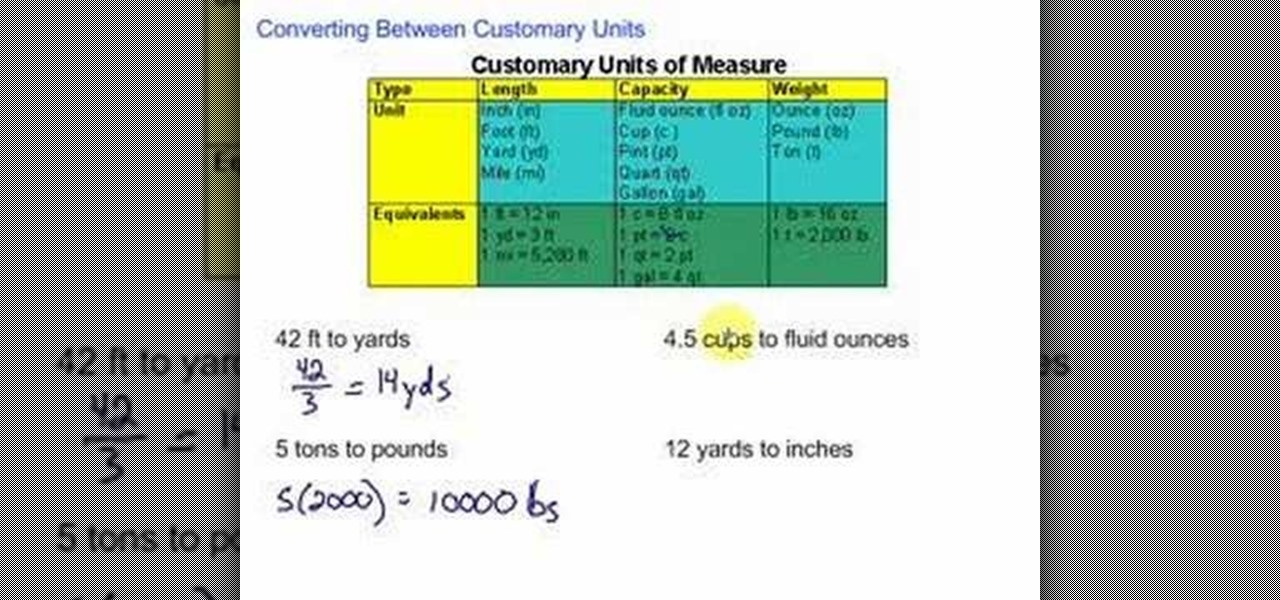
How To: Convert between customary units of measurement
In this video tutorial the author shows how to convert between customary units. He gives a chart which contain various convention tables showing the equivalents of various measurement units. He says a general rule that when converting a smaller unit to large unit we divide the numbers and when converting a larger unit to smaller unit we multiply the numbers. He takes a few examples and shows how to convert between various units like feet, yards, inches etc. This video shows how to convert bet...

How To: Divide fractions using the inverse
Learn to divide fractions using the inverse with this video. It is an easy way to divide the fractions just by multiplying the two fractions but reversing one of them. For example consider two fractions to be divided, (1/4) and (3/5). Then write the two fractions beside, one in the same way and another in the reverse order like remain (1/4) as it is and reverse (3/5) as (5/3). Then multiply these two terms (1/4) * (5/3) then the solution will be (5/12).
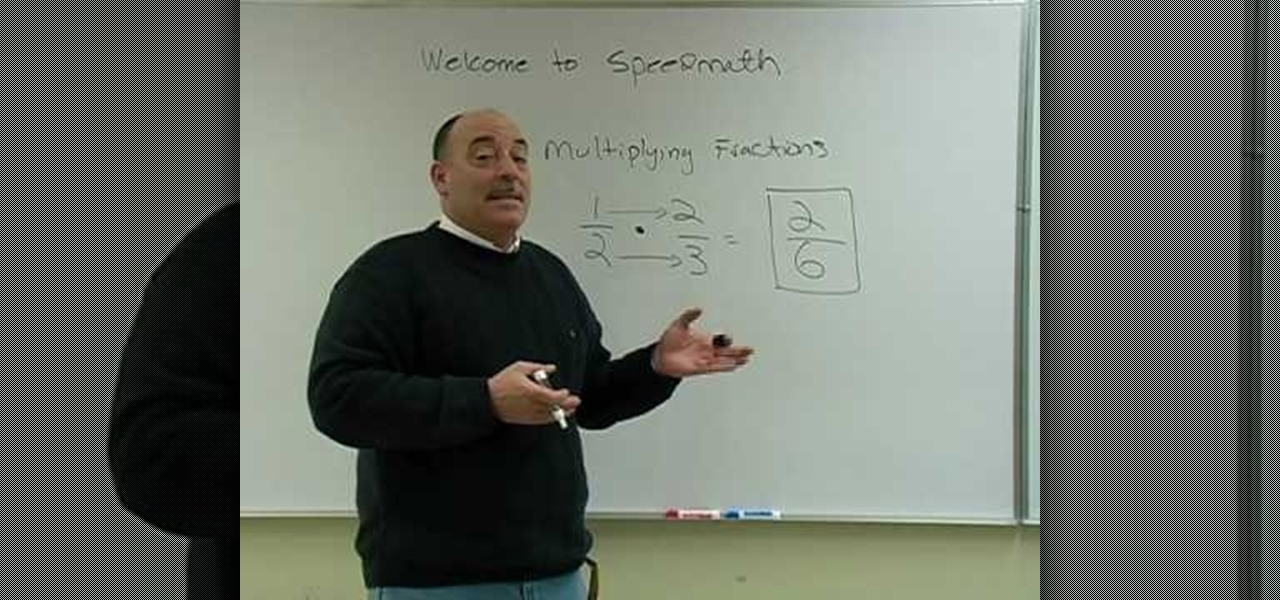
How To: Multiply and divide fractions with speed
Are you slow in multiplying and dividing your fractions? Let Mr. Rider from Speed Math 101 walk you through an easy to follow marker board math lesson that will have you managing those numerators and denominators like a pro. With a simple and easy to remember process, Mr. Rider walks you through common examples, misunderstandings, and problems. Improve your speed and accuracy in math class with the Speed Math 101 method. Avoid the usual pitfalls of improper fraction reduction that might you l...

How To: Use the vertical line test
This test can be used to determine whether the given graph is a function or not.
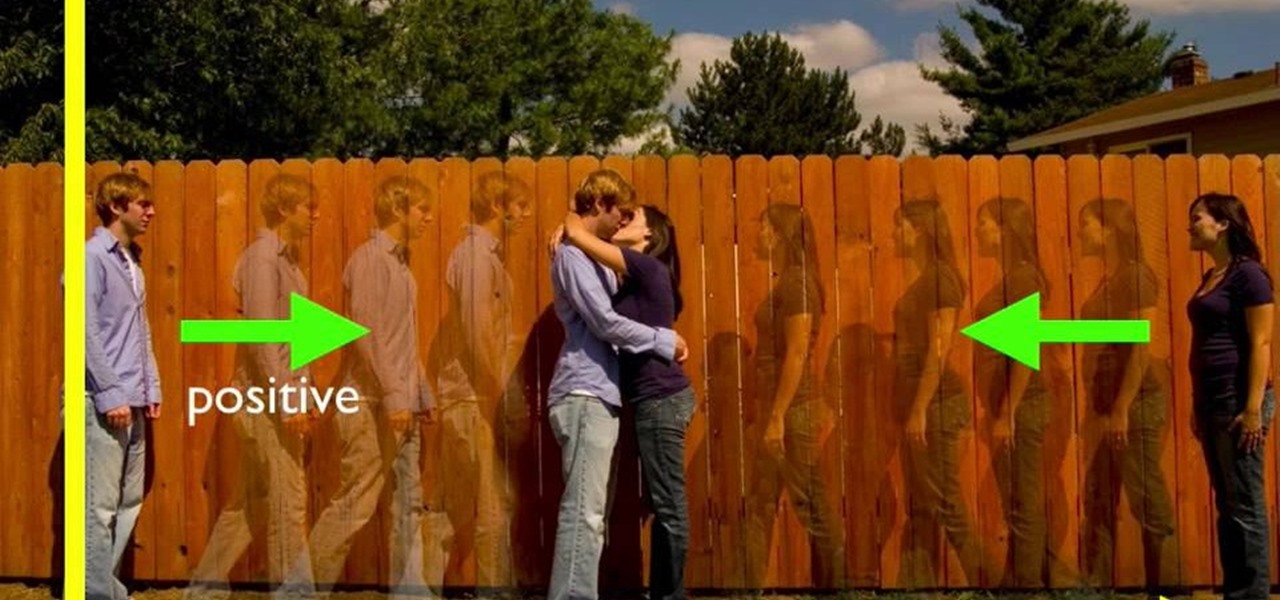
How To: Understand the basics of velocity & acceleration
The video Understand The Basics of Velocity & Acceleration (301974) is a tutorial into the physics of position, velocity and acceleration. Each concepts are explained in terms of physical properties for the purpose of mathematical equations. Acceleration for instance is the increase in speed of an object in time. It is important to understand how these words are defined then translated into mathematical quantities in order to do problems in physics. With the correct understanding of forces an...
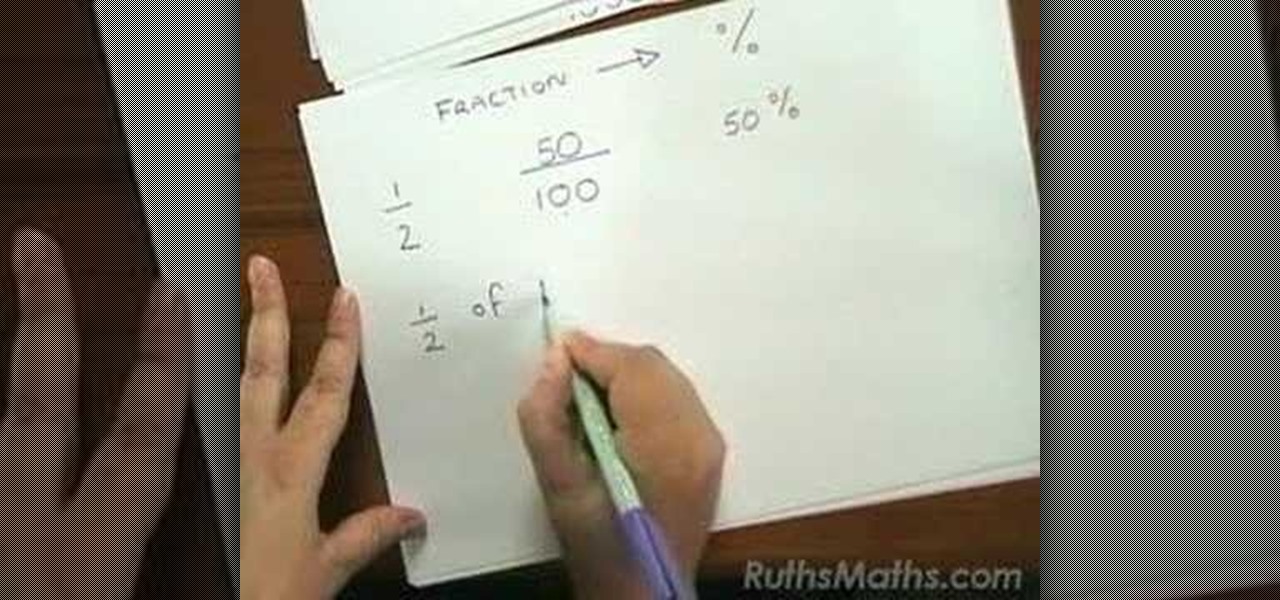
How To: Calculate percentages from fractions
Wondering how to calculate percentages from fractions? Just follow the few steps as given below. Firstly, take any fraction and multiply with 100. The resultant value that you get is nothing but the percentage itself.

How To: Shade a system of inequalities
In this video the instructor shows how to shade a system of inequalities. He says that shading a system of inequalities is similar to shading a single inequality but in the former case you tend to shade more than one inequality in the same graph. He shows how to do that using an example set of inequalities and plots the lines on the graph. He uses dotted lines for lesser than or greater than inequalities and uses straight lines for inequalities which contains the equal to symbol. Now he shade...

How To: Convert between diameter and radius
To convert between diameter and radius just follow a few steps. Sometimes we aren't given the number directly so first we need to find the diameter.
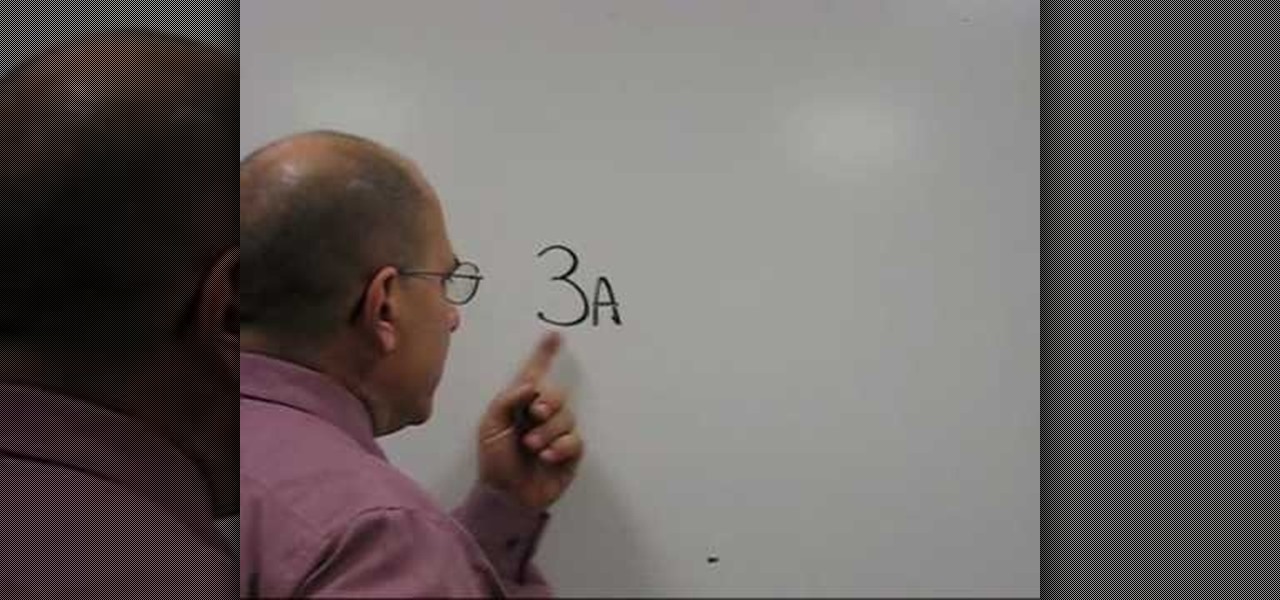
How To: Add and subtract to solve equations
In this video the tutor shows how to add/subtract to solve equations. He says that when we are trying to solve simple equations we need to perform the same operation on both the sides of the equation i.e. if we are adding something on one side of the equation we need to add the same thing on the other side of the equation too. Similarly for the subtraction too. He says that by doing this we still maintain the equality of the equation. He shows how to do this with an example. This video gives ...
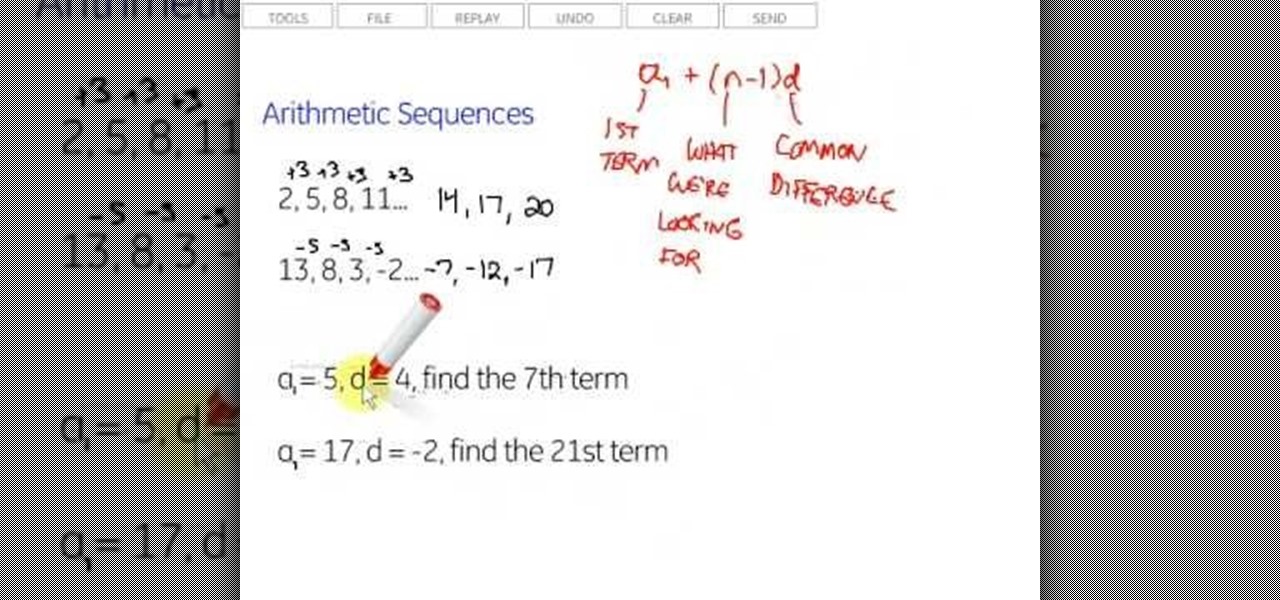
How To: Identify arithmetic sequences and find the nth term
This is a one of the coolest videos about arithmetic sequence, it has a very clear explanation about the arithmetic sequence formula and also more than one example which would help the viewer to learn this formula and its implementation in a easier way. This video is a also very helpful for the people who appear for interview since it is a very basic formula that every science student must remember.
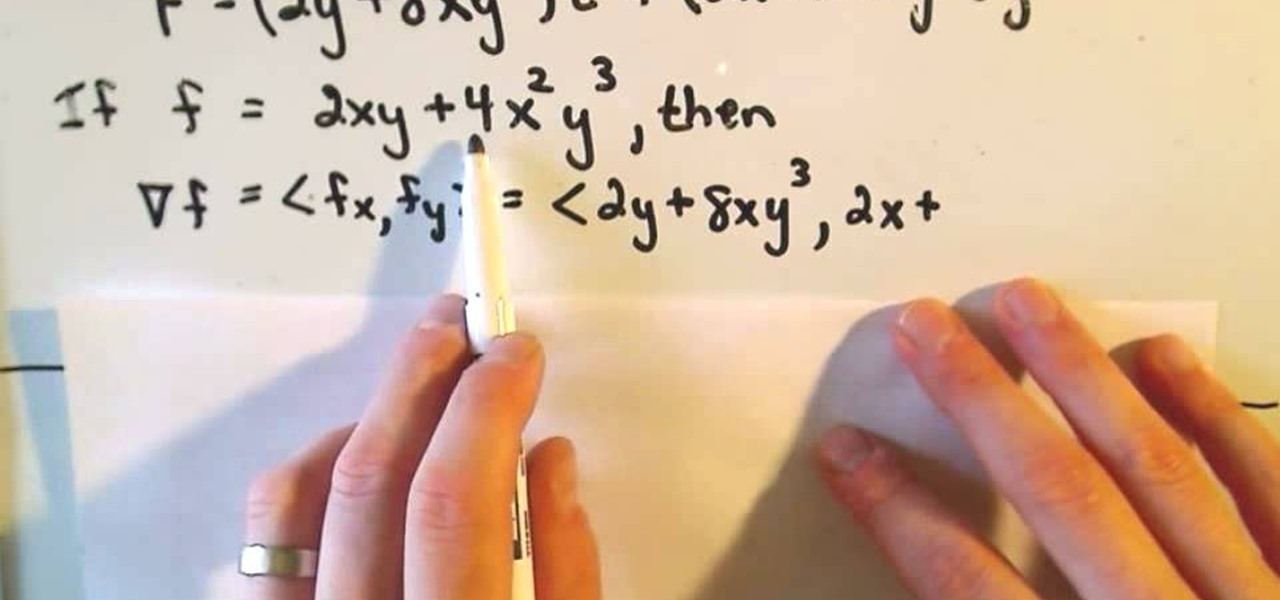
How To: Understand conservative vector fields
A conservative vector field is defined as being the gradient of a function, or as a scaler potential. Conservative vector fields are not dependent on the path; they are path independent. Conversely, the path independence of the vector field is measured by how conservative it is. These fields are also characterized as being ir-rotational, which means they have vanishing curls. Actually, ir-rotational vector fields are conservative as long as a certain condition on the geometry of the domain is...

How To: Use factor trees to find the factors of any number
Watch this video to learn how to use factors trees to find the factors of any number.

How To: Divide fractions and then reduce them
In this tutorial the instructor explains how to divide fractions. He gives a three step approach where in the first step we take the reciprocal of the second fraction. In the second step the newly arrived at fraction is multiplied with the original fraction. Now finally in step three the result is deduced and the answer is obtained. This video explains clearly and simply a three step procedure of how to divide fraction.
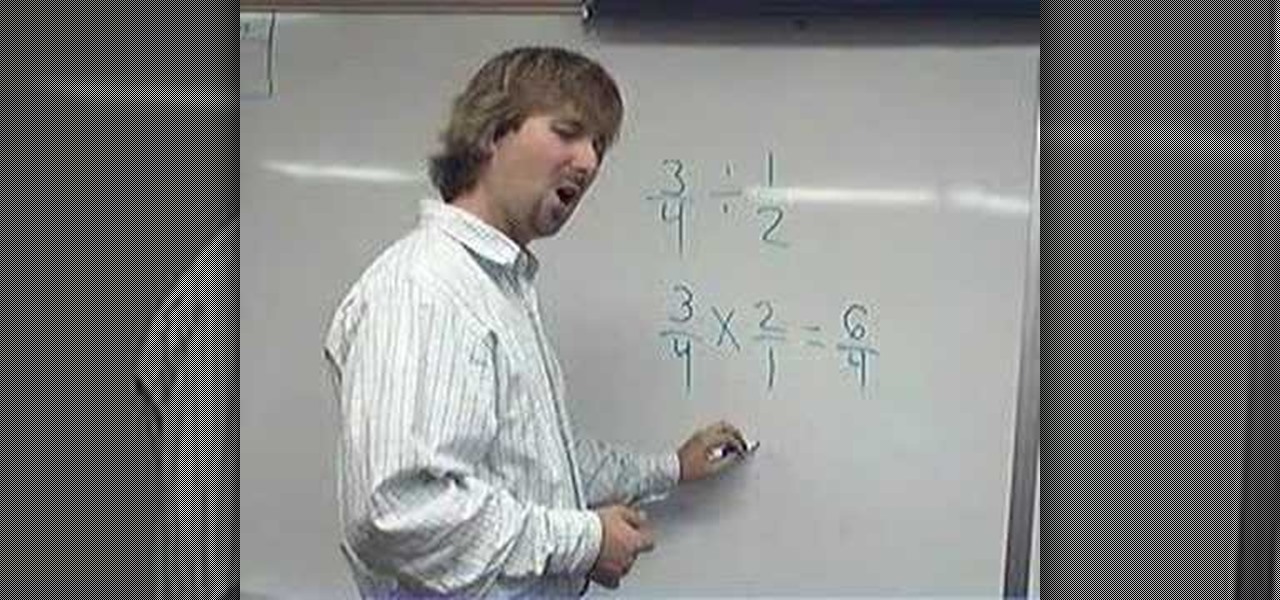
How To: Divide fractions by "flipping & dipping"
The instructor in this video gives a tutorial on how to divide fractions by "flipping & dipping" method. He says that to divide two fractions we need to follow two steps of flipping and dipping. He says to write the first fraction as it self and flip the second fraction and write it beside. Now he says that instead of dividing we are dipping and multiplying both the fractions which results in the division of the original fractions. Now after multiplying the fractions we get a fraction which c...
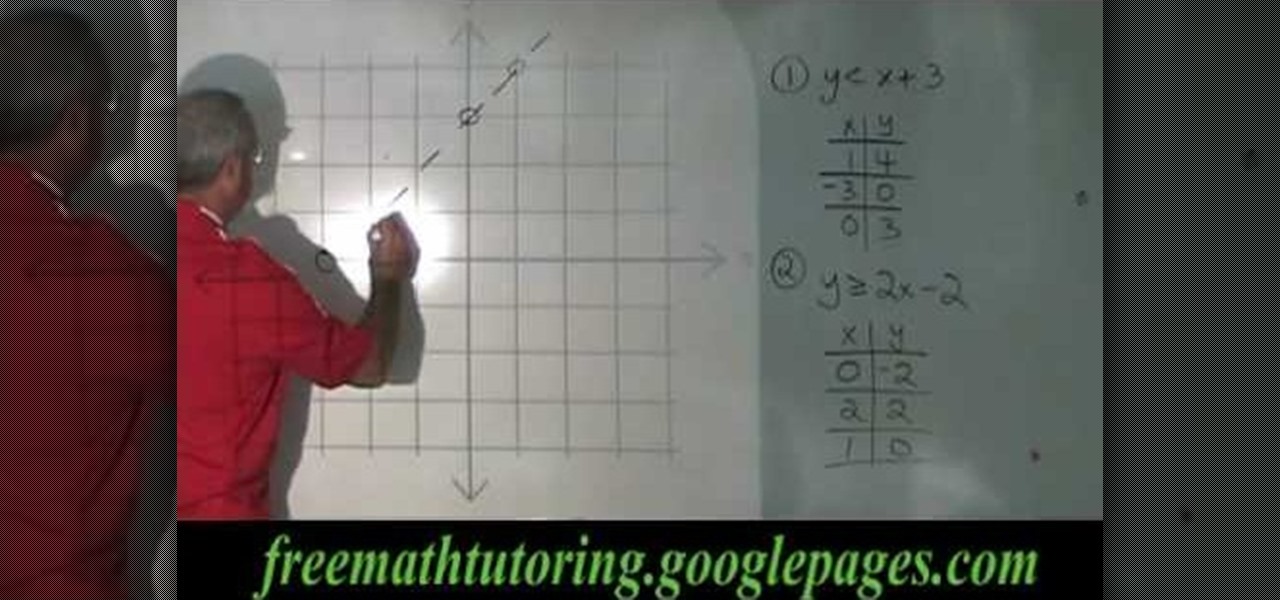
How To: Draw a dotted/solid line when graphing an inequality
In this video the tutor shows when to use a dotted line and when to use a solid line while graphing lines in coordinate geometry. He says that we should use a dotted line to plot an inequality which contains the symbols less than or greater than. He also says that we should use a straight line when plotting an inequality which contains the signs less than or equal to and greater than or equal to. He goes on and demonstrates this idea with some examples. This video shows how to use different l...

How To: Find the slope's unit of measure
This educational video from free math tutoring shows how to calculate the slope of a line and assign units to the answer obtained. This video assumes that the viewer is familiar with the concepts of axes and co-ordinate geometry. The narrator uses a commonly used formula to calculate the slope of the line in the first section of the video. In the second section, the narrator demonstrates how to assign units to the answer, as per the question asked.

How To: Understand positive, negative, zero & undefined slopes
This video explains how to find the sign of slope of a line. The way shown means that you can find whether it is positive or negative without knowing its equation. It uses a simple analogy so that anyone would be able to use this method, even without much math knowledge. Being able to find the slope of a line is very important, as it leads to advanced function and calculus.
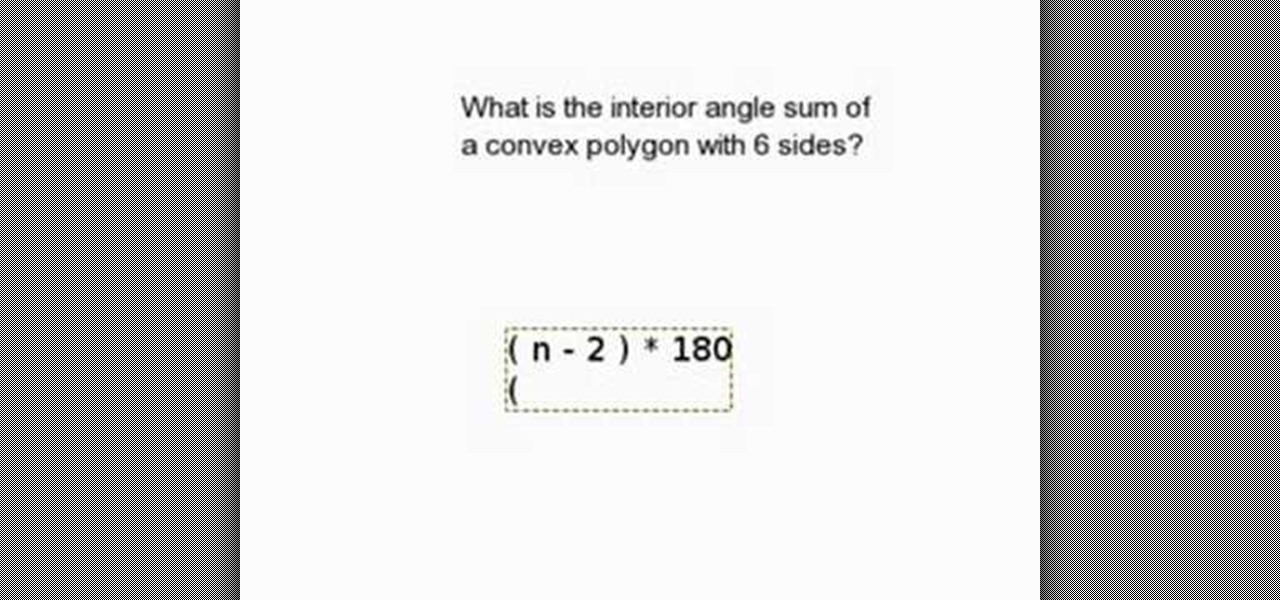
How To: Find the interior angle sum of a polygon
In this tutorial the instructor shows a method to compute the interior angle sum of a polygon. He gives us the formula for the interior angle sum of a convex polygon as (n-2) * 180 where n is the number of sides of the polygon. He goes and take a 6 sided polygon as an example and does the math by substituting the value of 'n' in the equation and arrives at the result. This video clearly gives the formula and demonstrates with an example of how to calculate the sum of interior angles of a poly...
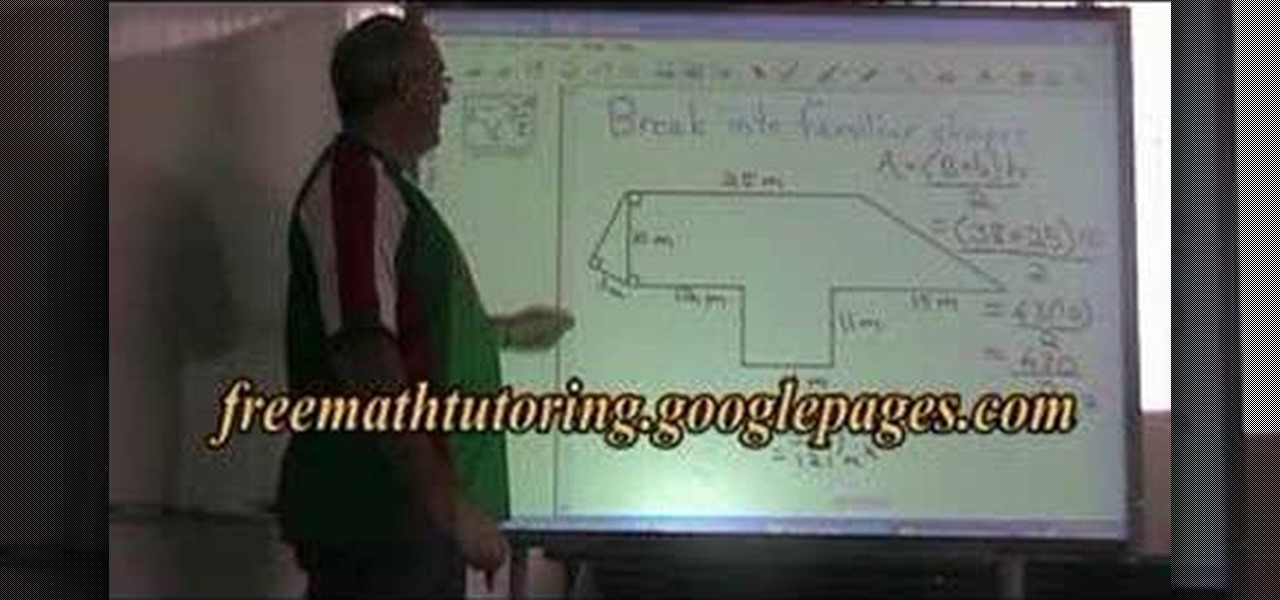
How To: Calculate the area of irregular shapes
In this tutorial the instructor shows how to compute the area of irregular shapes. He demonstrates this with an example showing an irregular area and says that as there is no direct formula to calculate it, you need to break up the irregular area into identifiable simple geometric figures. He goes on and breaks the irregular shape into a square, a triangle and a trapezoid. Now he computes the individual areas using a standard formula and sums them up to arrive at the final complete area of th...
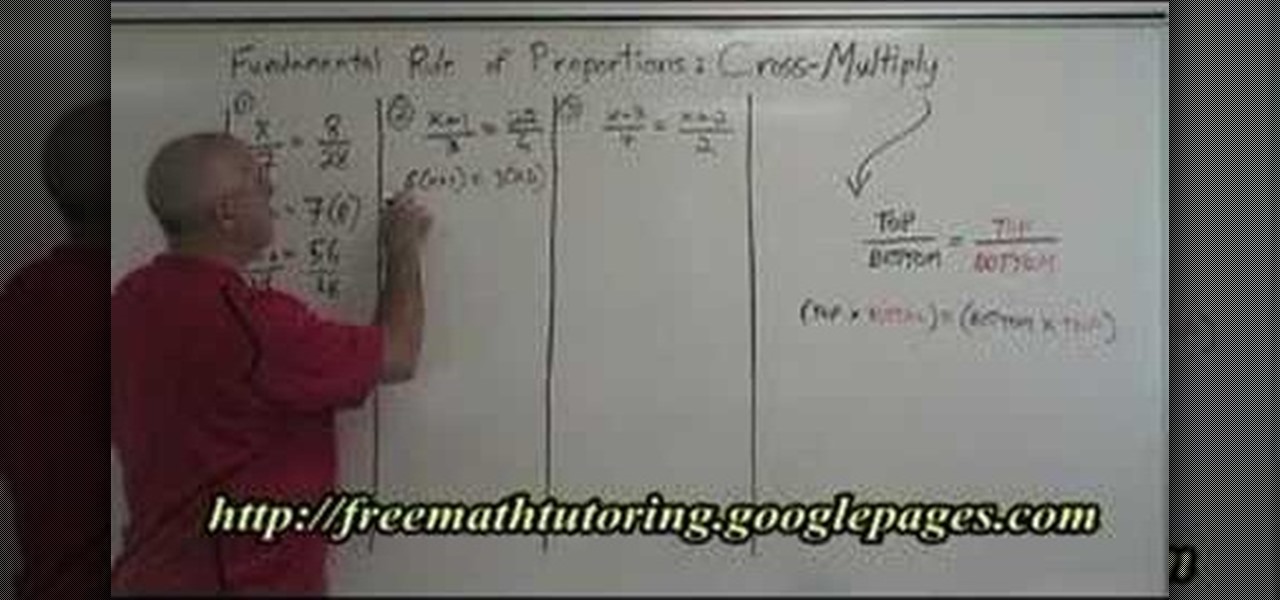
How To: Use the Fundamental Rule of Proportions in Algebra
The author in this video explains the concept of fundamental rule of proportions. Fundamental rule of proportions means cross multiply. He explains that to arrive from an equation which has fractions into the one without equation multiply the top of left side with the bottom of right side and equal it with bottom of left side multiplied with top of the right side. In this way proportions can be cross multiplied to arrive at an algebraic expression. If you want to master the rule of proportion...
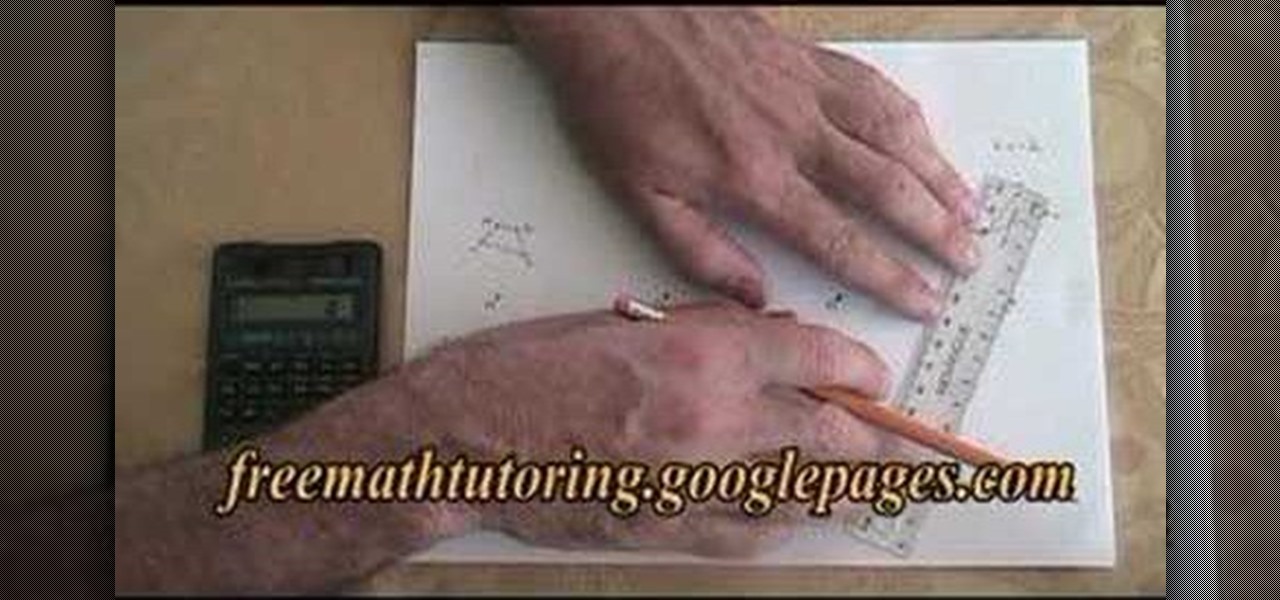
How To: Do a similarity transformation in Geometry
In this video the author shows how to do similarity transformations. He says that similarity transformations are used to draw the similar images at a different location and the k value is most important while doing this kind of transformation. He says that a negative k value tells that the copy of the shape will end at the opposite side of the origin to the original shape. He says that a positive k value tells that the copy will lie on the same side of the origin. Next thing about the k value...

How To: Multiply algebraic fractions
This video offers some insight into a few more difficult concepts of mathematics by teaching you how to multiply algebraic fractions. Given polynomials in fraction form, you should first try to factor all your polynomials into their simplest form in the hopes that some factors will be able to cancel each other out. After performing these steps, you can then combine your factored polynomials together in order to get your final product. The various examples provided in this video will offer goo...
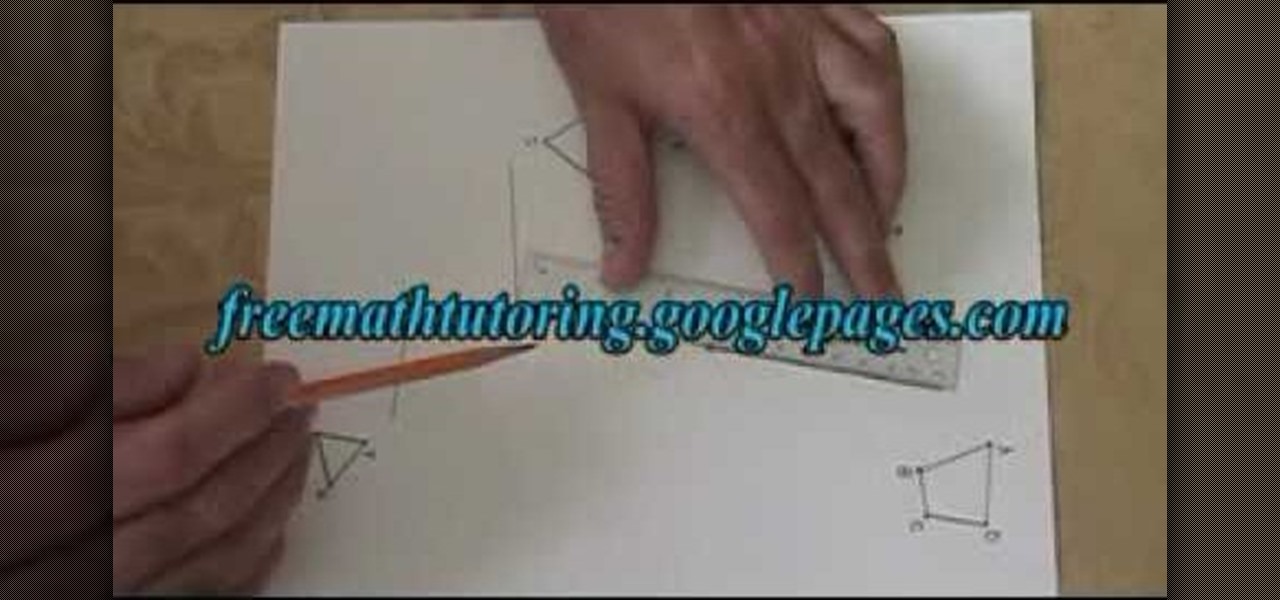
How To: Draw a translation in Geometry
In this tutorial, the instructor shows how to do a translation in geometry. Now he shows this by using various drawings and by practically explaining it while performing the translation. He first shows how to set up the translation line and now goes on to translate each and every vertex by drawing a parallel line to the translation line through each vertex, which is the same length as the length of the translation line. Now he combines the end points of the translated lines which gives us the...
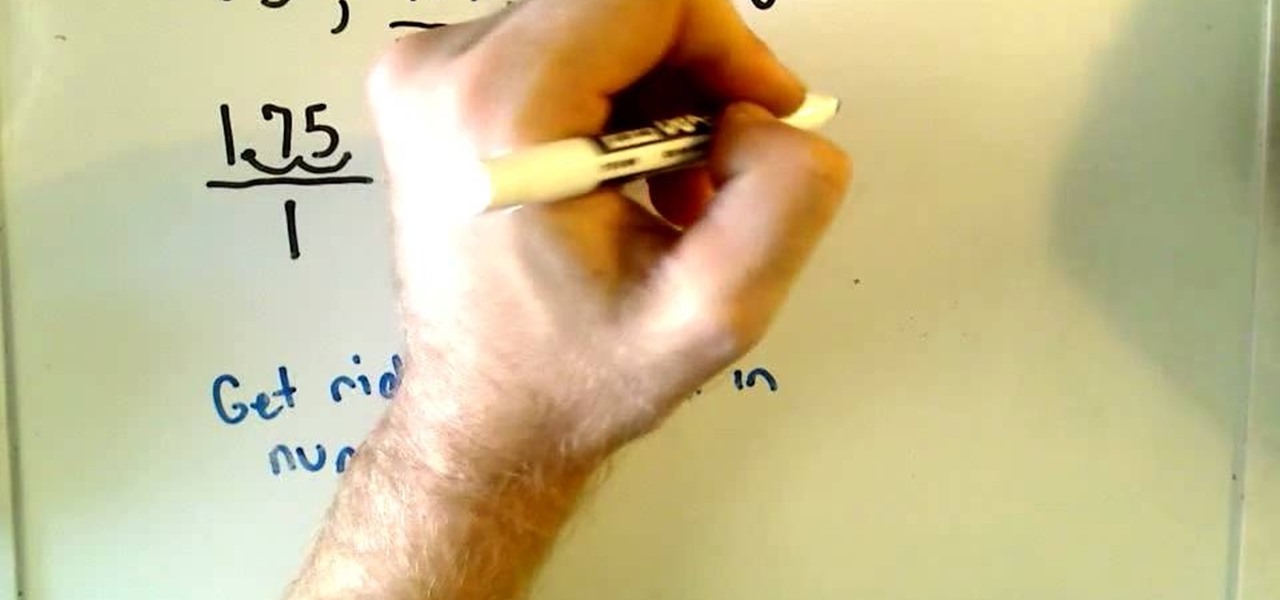
How To: Convert decimals into fractions
In this simple tutorial the author shows the basic arithmetic operations like converting a terminating decimal into a fraction. He says that the complexity depends up on the number we are converting. He asks us to imagine the decimal as a fraction with an imaginary denominator of value one. Now he intends to remove the decimal in the numerator by moving it to the right of the number and he tells us to similarly move similar number of decimal places in the denominator to maintain the original ...




